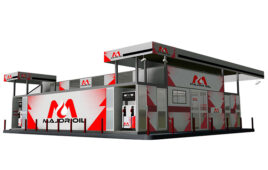 The NRF is calling for the Federal Reserve to review and revise the debit card swipe fee cap.
The NRF is calling for the Federal Reserve to review and revise the debit card swipe fee cap.
The National Retail Federation (NRF) has stated that, although the cap on debit card swipe fees, which was enacted by the Federal Reserve five years ago, has helped reduce costs for retailers and consumers, fees are still higher than intended by Congress, and the cap should be lowered.
“In most cases, 24 cents per transaction represents a significant savings over the prior non-competitive pricing,” NRF senior vice president and general counsel Mallory Duncan said. “However, it is still substantially higher than issuers’ incremental costs.”
Duncan said the cap “has worked moderately well,” but that “additional changes are necessary” if Congress’ goal of swipe fees that are proportional to banks’ costs for processing transactions is to be realized.
“Retailers have passed along two-thirds of the $8.5 billion in annual savings to consumers, but there would have been more savings to share if the Fed had set the cap at the level expected by lawmakers,” Duncan said.
Duncan’s comments came in a letter to the Federal Reserve, which is reviewing the cap under requirements of the federal Paperwork Reduction Act.
Under the Dodd-Frank Consumer Protection and Wall Street Reform Act of 2010, the Federal Reserve was required to adopt regulations that would result in debit swipe fees that were “reasonable and proportional” to the actual cost of processing a transaction. Federal Reserve staff calculated the average cost at four cents per transaction and proposed a cap no higher than 12 cents. Nonetheless, after heavy lobbying from banks, the Federal Reserve Board of Governors eventually settled on 21 cents plus 0.05% of the transaction for fraud recovery and allowed another one cent for fraud prevention in most cases. The cap, which applies only to financial institutions with $10 billion or more in assets, took effect in 2011 and totals about 24 cents on a typical debit card transaction.
While lower than the average of 45 cents before the cap was set, NRF argued that the cap included costs that went beyond those allowed under the legislation and filed suit against the Fed in U.S. District Court in 2011. A judge ruled in NRF’s favor and ordered the Fed to recalculate the cap, but an appeals court overturned the ruling and the U.S. Supreme Court refused to grant NRF’s petition to review the case.
Duncan said the shift of more fraud liability to merchants last fall under the conversion to EMV chip-and-signature cards is evidence that the 0.05% for fraud recovery “may no longer have a legitimate basis.”




